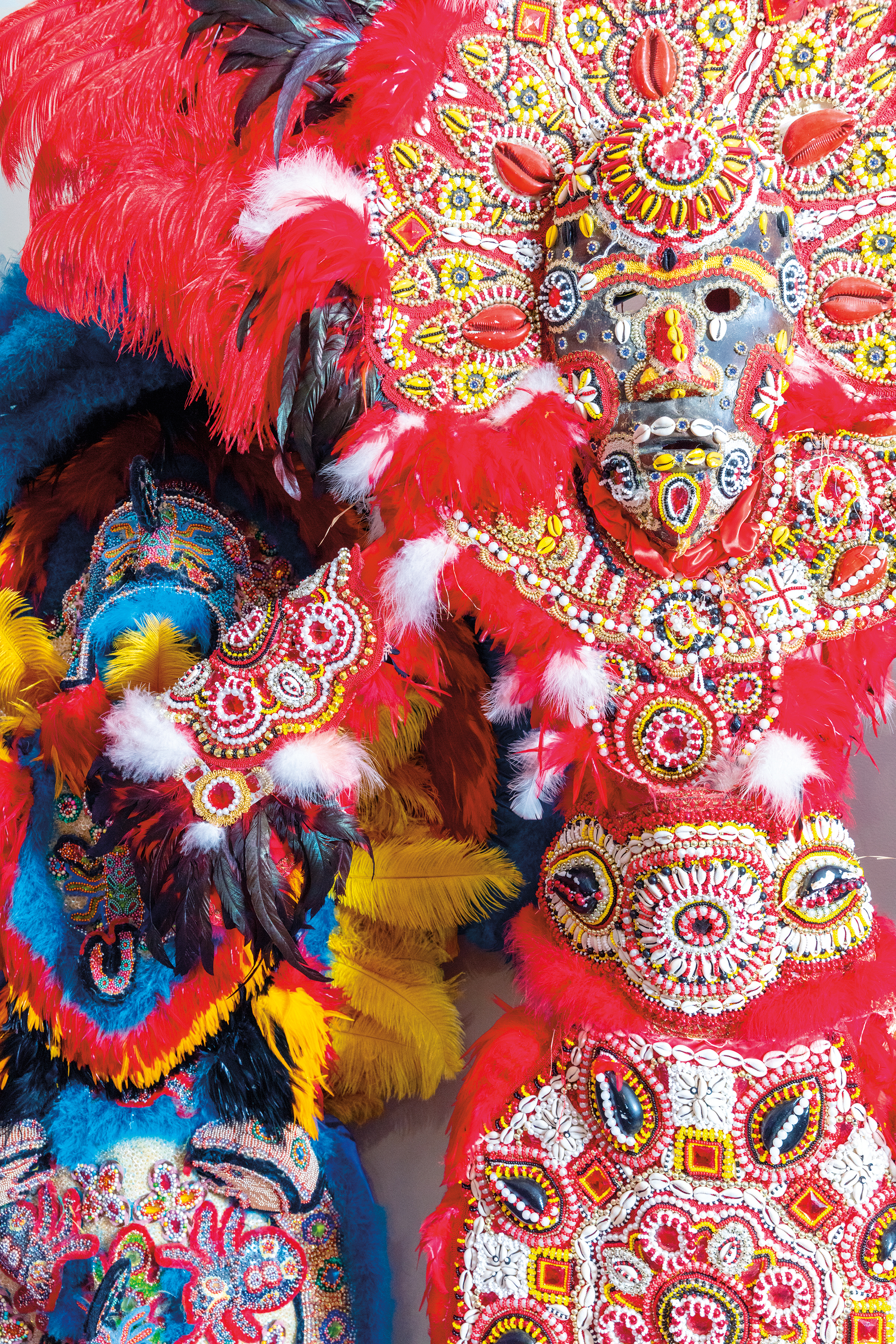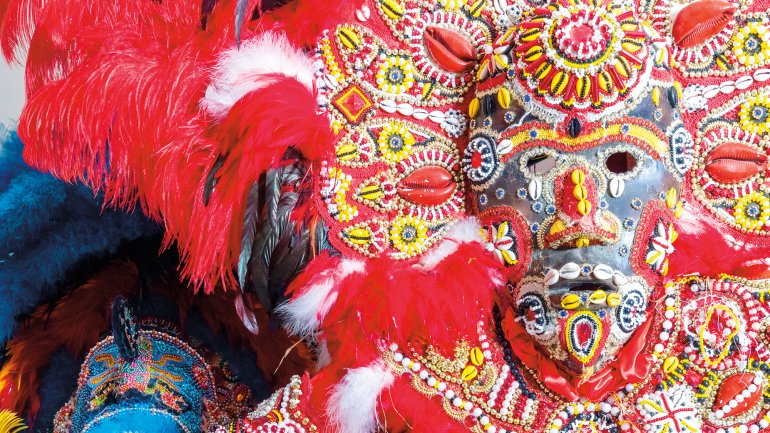The Scene: Craft in New Orleans
The Scene: Craft in New Orleans

New Orleans craft is not static. It doesn’t tend to sit on a counter or hang on a wall. “It comes to life,” says Charles DuVernay, whose beaded tapestries are drawing crowds to New York City galleries these days.
Like many New Orleans artists, his craft is only one part of his life. “I don’t see myself as ‘artist Charles,’” says DuVernay, who sews mostly at night after a day of working on the Mississippi River, where he tests the quality of sugarcane that arrives by barge. “Because in New Orleans, everybody does art.”
As sculptor and visual artist Hannah Chalew puts it, “There is a spirit of creativity endemic to this place.”
Long a gathering spot for Native Americans, New Orleans was settled by the French in 1718 on a high-ground rectangle along the Mississippi River that became the French Quarter. The port drew people from all over, including the Eastern Seaboard, Europe, Latin America, and the Caribbean, particularly the French colony of Saint-Domingue, now Haiti. New Orleans became known for its trade of cotton, sugar, and human cargo, sold here in the country’s largest slave market.
Much of the city’s well-known architecture was built either by enslaved carpenters and artisans or by French-speaking Afro-Creole free people of color, known as gens de couleur libres, who made up more of the population of New Orleans than anywhere else in the nation and whose story is still told everyday by the docents at Le Musée de f.p.c. on Esplanade Avenue.
As a child, DuVernay watched his grandfather, Otis DuVernay, a well-known master carpenter, create dramatic arches and intricate, decorative trim for both fancy French Quarter townhouses and the humble shotgun-style houses that make up most of the streetscape in his native 7th Ward, a short walk from the Quarter.
Many 7th Ward families were, and still are, headed by craftspeople, seamstresses, and jazz musicians. One can argue that the city itself is a work of art that constantly requires skilled tending, fixing, and restoring by blacksmiths, plasterers, and other artisans.
Born in 1922, Allison “Tootie” Montana, a lathe worker by trade, created some of the structural framework that underpins the city’s ornate plasterwork. At home he was known as Big Chief Tootie of the Yellow Pocahontas tribe, one of the city’s Black Masking Indian tribes. Montana, calling upon both his Native American and Creole ancestry, used his talents to shape corrugated cardboard and other materials three-dimensionally, revolutionizing the look of the beaded and feathered suits his family had worn during Mardi Gras since the mid-1800s.
Kids growing up in these traditions learned to shape cardboard for play. They watched wrestling matches on TV and folded cardboard into elaborate wrestling belts. They won class awards for mini Mardi Gras floats made from shoeboxes, an annual New Orleans school competition. Still today, although gentrification has made it less common, children host second line parades along local sidewalks, pounding on drums made from boxes and buckets, and perhaps even toting a Big Wheel over a shoulder, pretending it’s a sousaphone.
The city simply has a unique approach to art, says ceramist and Xavier University of Louisiana department chair MaPó Kinnord. “In New Orleans, it’s a way of life. It’s so much a part of the culture.”
Artists often credit these deep traditions with inspiring them to both create traditional craft and innovate with more experimental and interpretative expressions. You’ll read more about that in the following pages of this, American Craft’s second installment of The Scene.
As Kinnord views it, New Orleans has “an art community, not an art world. In fact, we don’t care what the art world thinks.”
You can see that swagger on Sunday afternoons, when members of the city’s social aid and pleasure clubs, dressed in one-of-a-kind suits and custom-made leather shoes and carrying feathered and beribboned fans, strut and dance through neighborhood streets, serenaded by brass bands, for hours-long second line parades.
No stranger to tragedy, New Orleans was hard-hit by the coronavirus; Mardi Gras 2020 was a super-spreader event, as tourists brought the virus to the celebration. Its poverty and per capita murder rates are among the highest in the nation. Its coastline is eroding faster than nearly anywhere else on Earth. The inequitable rebuilding of the city after Hurricane Katrina in 2005 triggered more gentrification, pushing Black families—and artists—farther out of the city.
Chalew believes the city’s natural relationship with craft may be an effort to find beauty within hardship. “New Orleanians live in the moment and prioritize celebration and joy,” she says, “because we know how quickly everything can change.”




